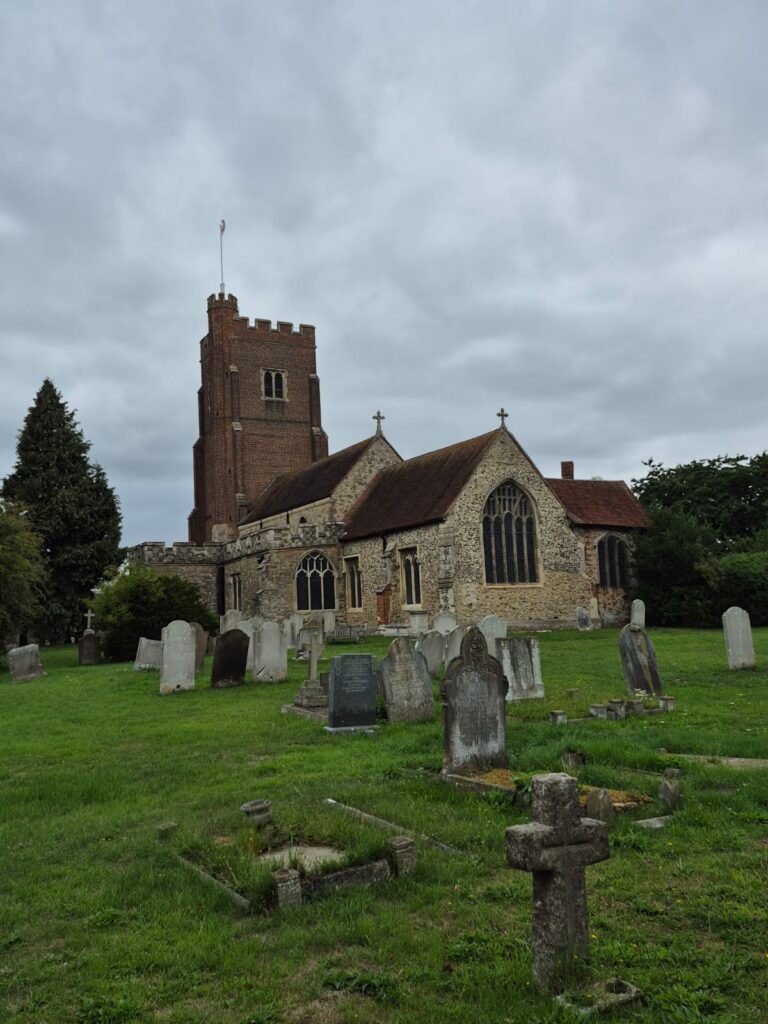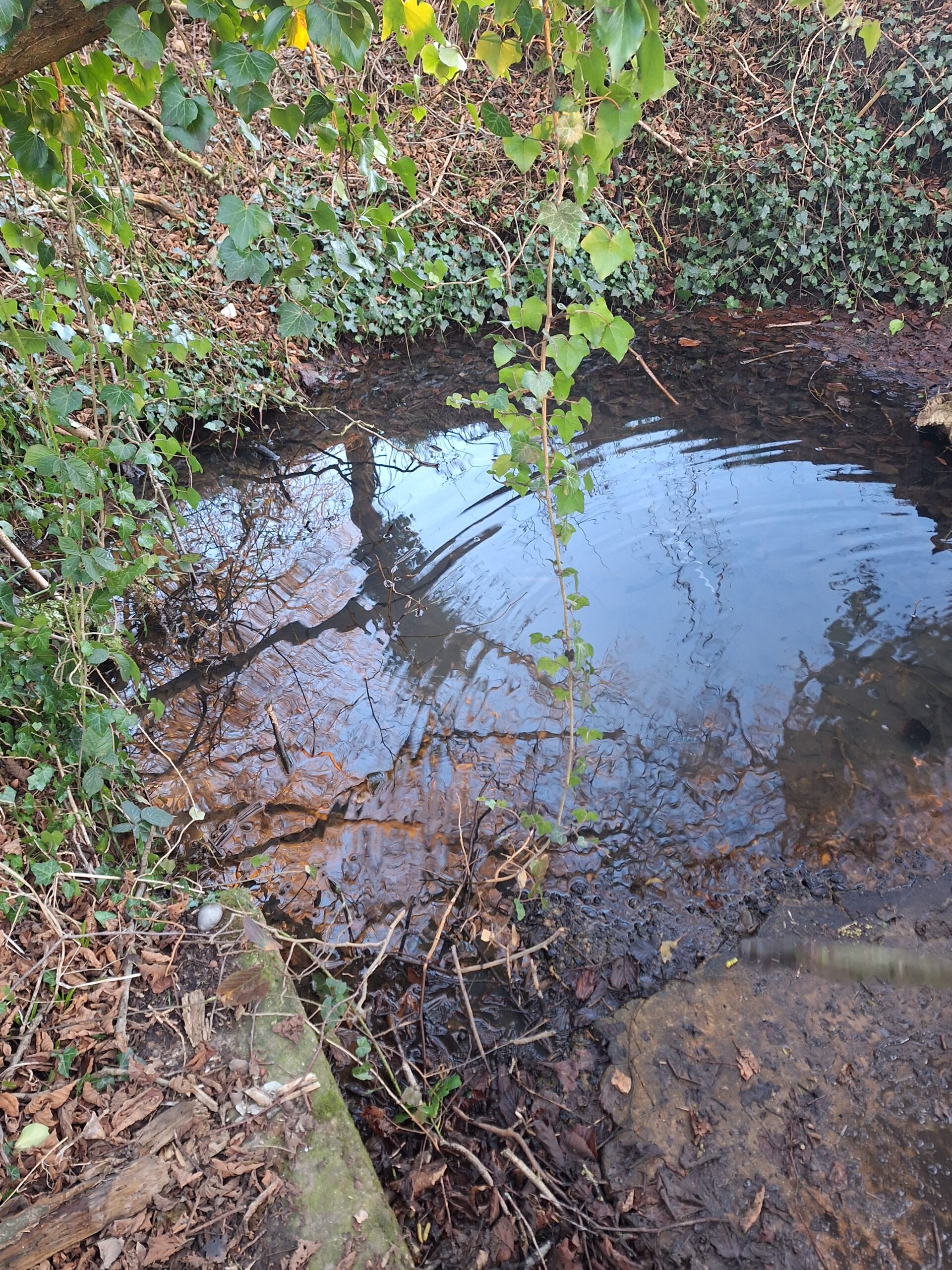A little historic murder mystery

The Mystery of Emma Hunt of Rochford
By Richard Clements
In the churchyard of St Andrew’s, Rochford, a lone gravestone still catches the eye of visitors. It stands under the shadow of old yews beside the small brook that threads through the meadow beyond. The name on the stone is Emma Hunt, a dressmaker whose life came to a violent end in the spring of 1893. Her epitaph, taken from scripture, reads:
“For God shall bring every work into judgment, with every secret thing, whether it be good or whether it be evil.”
For well over a century that line has hung in the air like a question still waiting for its answer.
A Dressmaker’s Life
Emma Hunt lived quietly in one of three cottages near the Old Ship Inn on North Street. Divorced, which was unusual for her time, she earned respect as a careful and capable seamstress. Neighbours spoke of her steady nature and her habit of keeping to herself.
On Saturday, 20 May 1893, the calm pattern of her life came to an end. That afternoon, sixteen-year-old Alfred Hazell, a local labourer, was crossing a stretch of marshland called The Wilderness. The meadow lay between the railway and the church, with a shallow brook winding through it. Something pale caught his eye among the reeds. When he went closer, he realised it was a woman lying face-down in the water.
It was Emma Hunt. She was still alive, though barely. Her throat had been cut, and her hands and face were bruised as if she had fought back. A broken umbrella rested nearby in the grass. Within minutes she was gone.
Rumours and Theories
News of the tragedy spread through Rochford before nightfall. Most people believed at once that Emma had been murdered. The injuries were too severe to be self-inflicted, and gossip quickly formed around the idea of a stranger seen walking with her earlier that day.
The Essex Constabulary took another view. Officers argued that Emma had been depressed, that she had said a final farewell to her son, and that mourning clothes were found laid out at her home. The missing knife, they suggested, might simply have been carried away by the current.
Dr James, who examined the body, disagreed. He pointed to the bruises on her right hand and the cuts on her face as proof of a struggle. The broken umbrella, he said, supported his opinion that Emma had tried to defend herself. His conclusion was simple: she had not done this to herself.
An Arrest without Justice
The investigation produced confusion rather than clarity. No weapon was ever recovered, and the mysterious stranger vanished without trace. Then came a decision that shocked the town. The police arrested Alfred Hazell, the very boy who had discovered the body.
At the inquest a six-year-old child named Wakeling claimed he had seen a man attack a woman near the brook. When questioned, he stated that the man he saw was not Hazell. Even so, the teenager was charged and sent to stand trial at the Essex Assizes.
Press reports from the summer of 1893 describe how the case quickly collapsed. The prosecution had no firm evidence and no witnesses beyond conjecture. The judge told the court there was “no case to go before a jury,” and Hazell was freed.
After that, official interest dwindled. The police maintained their view of suicide, but few in Rochford believed them. The truth had slipped beyond reach.
The Story that Never Died
Time passed, yet the memory of Emma Hunt’s death never faded. The tale was retold in pubs and parlours, sometimes as a warning, sometimes as a ghost story. Parents told children not to wander near The Wilderness after dark. Each generation adjusted the details but kept the same uneasy ending.
The meadow where Emma was found is now part of the Rochford Hundred Golf Course. The brook still winds behind the church, catching the light between reeds and stones. Visitors to St Andrew’s Churchyard often pause by her grave. The inscription has weathered a little, but its message endures.
Whether Emma Hunt fell to violence or despair is a question no one can now answer. What remains is the sense of a life interrupted and a mystery that refuses to fade from Essex’s memory.
References
The Lincolnshire Echo, 22 May 1893; The Leicester Daily Post, 23 May 1893, “The Murder of Emma Hunt in Rochford.”
Jack the Ripper Tour, “The Murder of Emma Hunt, Rochford,” 2023,
Rochford Town Team, “St Andrew’s Graveyard,” Local Heritage Trail Notes, 2021.
The True Crime Enthusiast Podcast, Series 1, Episode 7, “The Cold Case of Norah Trott.”
